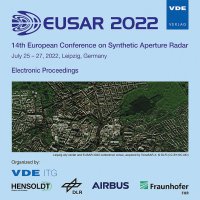Impact of trajectory mismatch on 3D ISAR imaging of aerial targets
Konferenz: EUSAR 2022 - 14th European Conference on Synthetic Aperture Radar
25.07.2022 - 27.07.2022 in Leipzig, Germany
Tagungsband: EUSAR 2022
Seiten: 6Sprache: EnglischTyp: PDF
Autoren:
Rytel-Andrianik, Rafal; Maslikowski, Lukasz; Baczyk, Marcin; Drozdowicz, Jedrzej; Samczynski, Piotr (Faculty of Electronics and Information Technology, Warsaw University of Technology, Poland)
Inhalt:
Inverse Synthetic Aperture Radar (ISAR) images of air targets are used as input data for target recognition algorithms. So far, mainly two-dimensional (2D) images have been used. Their significant disadvantage is that two-dimensional ISAR imaging of a three-dimensional (3D) target can vary significantly depending on the angle of observation and the momentary axis of rotation of the object. This problem is addressed by the interferometric ISAR (InISAR) technique that has gained popularity recently. It enables a three-dimensional target image to be obtained, which makes the classification easier. The authors have been working on InISAR imaging of air targets and, like other researchers, have emphasized the development of autofocus algorithms. This is a crucial issue because, for non-cooperative targets, their trajectory is unknown and can only be estimated. However, to obtain high-resolution imaging, the trajectory must be known accurately, which is impossible without autofocus algorithms. This paper presents the study on non-cooperative target position measurement accuracy utilizing three receiving (Rx) channels active radar for 3D ISAR imaging purposes. Additionally, the simulation results, for C-band and X-band active radar, of using two autofocus methods to improve the accuracy of trajectory estimation: Image Contrast Based Autofocus (ICBA) and Image Entropy Based Algorithm(IEBA) are presented, and the obtained results are discussed.


